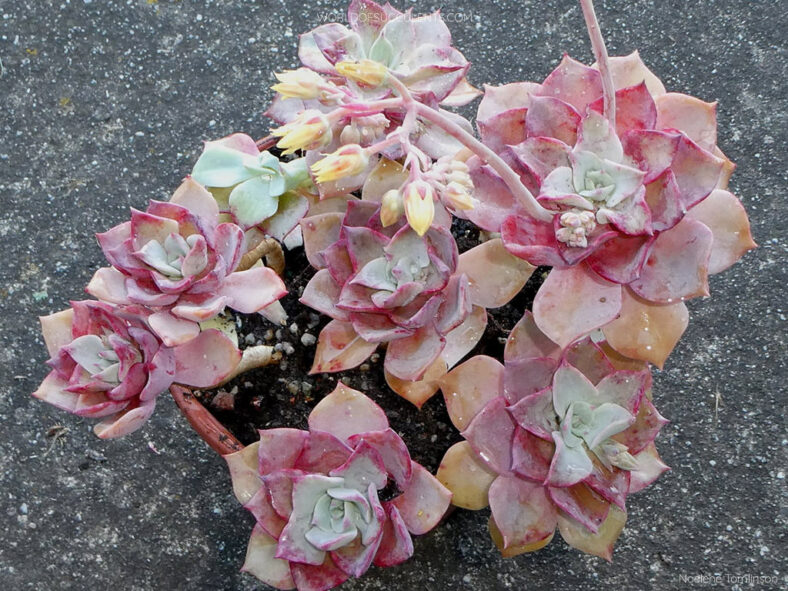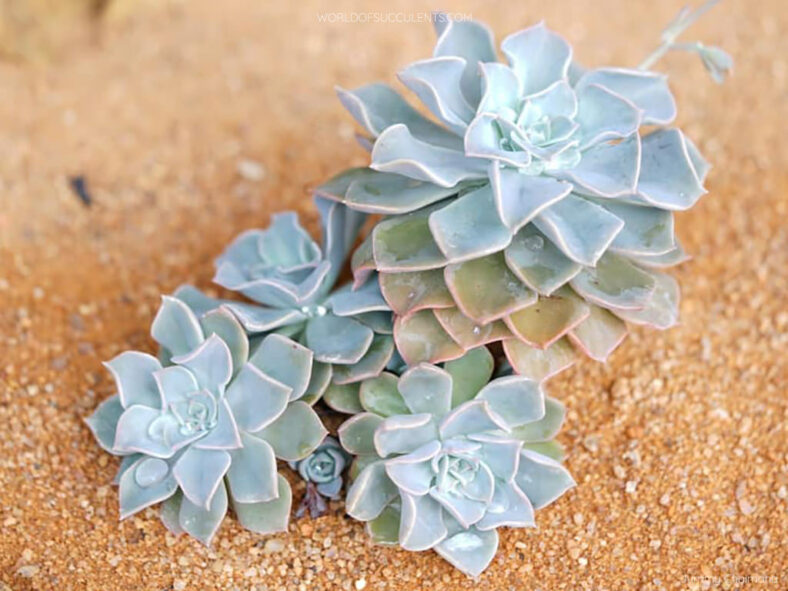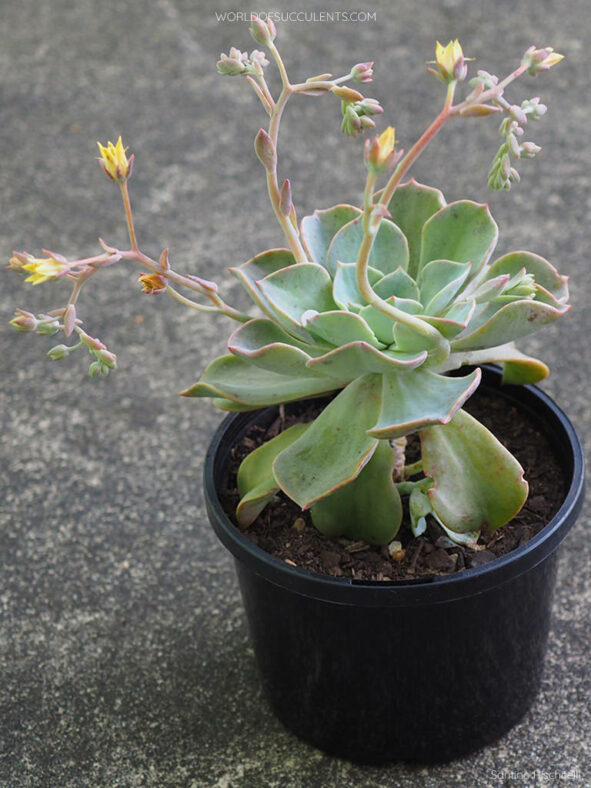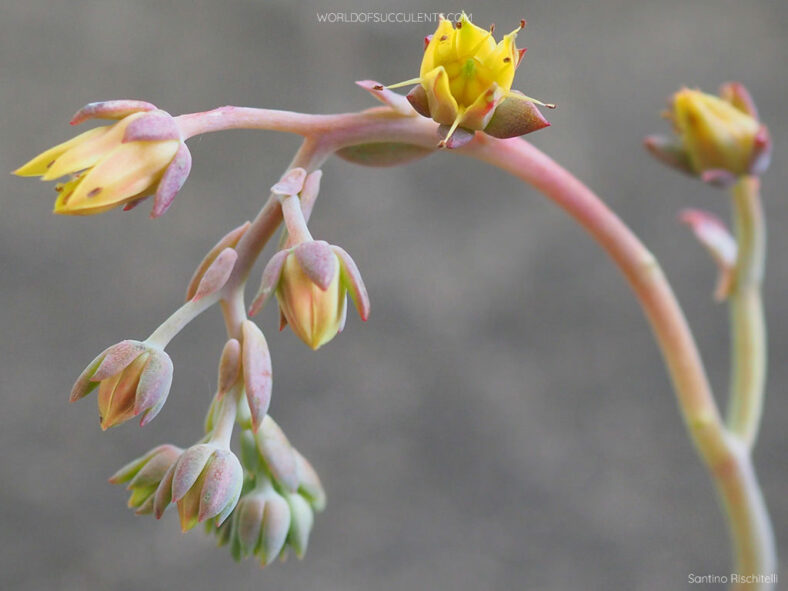Scientific Name
×Graptoveria 'Coconut Ice'
Scientific Classification
Family: Crassulaceae
Subfamily: Sempervivoideae
Tribe: Sedeae
Nothogenus: ×Graptoveria
Etymology
The hybrid was named after a British confectionery prepared using grated desiccated coconut or just grated coconut, condensed milk, sugar, and pink food coloring on half of the candy, resulting in pink and white coloration.
Origin
According to Bev Spiller, this is an Australian hybrid created by Dave Poulgrain in the late 1990s or early 2000s. It was first named Echeveria 'Pretty in Pink' and changed to ×Graptoveria 'Coconut Ice' when it became apparent it was a ×Graptoveria. It is not to be confused with the other one selling as Echeveria 'Pretty in Pink' (or ×Graptoveria 'Pretty in Pink'), which has been proven to be ×Graptoveria 'Marpin'. The parentage is unknown.
Description
×Graptoveria 'Coconut Ice' is a beautiful succulent that forms rosettes of fleshy, pointed, pale blue-green and pink leaves with wavy edges. The rosettes can grow up to 6 inches (15 cm) in diameter and produce offsets. The pink color on the leaves becomes less pronounced or deeper depending on the season and growing conditions.
The flowers are bell-shaped and yellow, sometimes with red markings on the outside. In spring, they appear in clusters in branched inflorescences.
×Graptoveria 'Coconut Ice' is also sold as ×Graptoveria 'Pretty in Pink' or ×Graptoveria 'Pretty n Pink'.

How to Grow and Care for ×Graptoveria 'Coconut Ice'
Light: ×G. 'Coconut Ice' prefers full sun to partial shade. If you move your plant outside in the spring, do it gradually. The intense afternoon sun can cause sunburn. During the winter, when the plant is inside, place it near the brightest window in your home. It will stretch if it does not have enough sunlight.
Soil: This succulent needs a potting soil mix that drains quickly. Many growers create their own mix, but commercial succulent potting mixes will work fine.
Temperature: This plant is a tender succulent, which means it must be brought indoors for the winter to survive. ×G. 'Coconut Ice' can withstand temperatures as low as 25 °F (-3.9 °C). USDA Plant Hardiness Zones 9b to 11b, 25 to 50 °F (-3.9 to 10 °C).
Watering: Provide moderate amounts of water from spring to fall. The "soak and dry" method is the preferred schedule for watering ×G. 'Coconut Ice'. If you have saucers under the pots, empty the water briefly. Water your plant just enough to keep it from shriveling during winter.
Fertilizing: ×G. 'Coconut Ice grows well without fertilizer but may benefit from the extra nutrients. In spring, use a slow-release or liquid fertilizer diluted 2 to 4 times more than usual and used less often than recommended.
Repotting: Repot the plant only as needed during spring or early summer when it grows actively. To repot your ×G. 'Coconut Ice', ensure the soil is dry before repotting.
Propagation: This succulent is propagated from leaf or stem cuttings. Spring is the best time to take cuttings.
Learn more at How to Grow and Care for Echeveria.
Toxicity of ×Graptoveria 'Coconut Ice'
×G. 'Coconut Ice' has no toxic effects reported. It is safe around pets and humans, although it is not advisable to eat it.
Links
- Back to nothogenus ×Graptoveria
- Succupedia: Browse succulents by Scientific Name, Common Name, Genus, Family, USDA Hardiness Zone, Origin, or cacti by Genus
Photo Gallery
Click on a photo to see a larger version.


